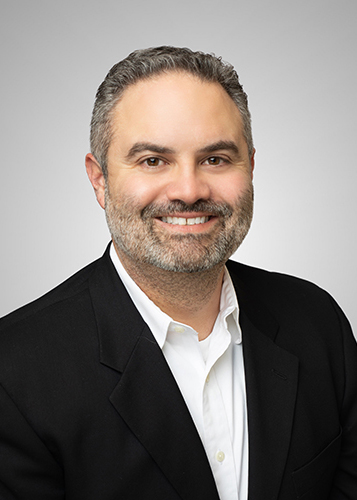Bridging the gap: Addressing health inequities in rural communities
In rural America, a pressing issue persists: the challenge of accessing quality health care amidst increasing barriers to essential medical services. Despite these challenges, there are pathways to ensure access to health care is equitable for all. By exploring the complexities of rural health inequities, we can strive to highlight solutions and advocate for a future where every individual has equal access to health care, regardless of their geographic location.
Challenges faced by rural communities
Rural communities contend with a significant scarcity of health care providers, with 68 physicians per 100,000 people compared to 80 in urban areas. This shortage underscores the struggle to access vital medical services, particularly specialty care.
Many rural areas are located far from medical facilities, making it difficult for residents to access timely care, especially with limited public transportation. Additionally, rural communities often face higher rates of poverty and unemployment, which can impact residents' ability to afford services and secure transportation. These multifaceted challenges compound the challenges rural residents face and highlight the urgent need for targeted interventions.
Geographical differences have a significant impact on health outcomes, but through the adoption of telehealth and other creative approaches, rural areas can overcome these barriers. In 2021, the initiation of the Broadband Equity, Access and Deployment Program marked a positive step toward establishing essential infrastructure in rural regions, making telehealth a feasible health care alternative.
By leveraging data to identify gaps in health care access and outcomes, rural communities can develop targeted strategies to improve health care delivery. Stakeholder engagement also plays a crucial role in this process, bringing together community members, health care providers, and policymakers to collaboratively design and implement solutions that meet the unique needs of rural populations.
Socioeconomic factors and health care access
Socioeconomic dynamics such as education further compound rural health disparities. While urban areas benefit from robust resource allocation, rural regions often contend with limited funding for critical sectors. Despite receiving government funding, rural schools often allocate a significant portion of their budget to transportation expenses, diverting resources away from essential education initiatives. Under-funded schools lacking in resources and opportunities hinder the development of a skilled workforce — including health care professionals. By advocating for increased investment and equitable distribution of resources, rural communities can strengthen their education system and build a thriving health care workforce.
Impact of hospital closures
The closure of rural hospitals leaves communities stranded in health care deserts. It is also crippling to the local economy, as hospitals are typically one of the top three employers in rural areas. If the pillars of a successful community are local business, education, affordable housing, and health care, the lack of health care options will stall community growth. Coupled with provider shortages, the exodus of health care infrastructure exacerbates the challenges faced by rural residents who find themselves with limited options for essential medical care.
The promise of telehealth
In the face of hospital closures, telehealth again emerges as a beacon of hope, transcending geographical barriers and delivering vital health care services to rural America. Its role in mitigating the impact of hospital closures and provider shortages offers a lifeline to underserved communities.
Telehealth’s impact goes beyond mere convenience – it fundamentally alters the landscape of health care delivery. The American Hospital Association emphasizes telehealth's pivotal role in expanding access to care in a powerful testimony highlighting the indispensable nature of telehealth flexibilities. By removing geographic restrictions and broadening the pool of eligible practitioners, telehealth has the ability to ensure equitable access to health care for all.
Telehealth also allows rural hospitals to keep patients local rather than transfer them to urban hospitals. However, the lack of specialists in rural areas and inequitable investment in rural infrastructure such as broadband access, housing, and educational opportunities require innovative solutions to ensure continued access to telehealth services for all rural residents. Telehealth's potential to overcome these challenges underscores the need for strategies that address the broader issues facing rural communities.
Empowering communities with grassroots solutions
Addressing health disparities in rural communities calls for grassroots initiatives firmly based in community engagement and unwavering commitment. Successful community-driven efforts emerge as catalysts for change, tackling health inequities at their source and fostering a culture of health and well-being.
These grassroots solutions often begin with heightened data awareness, illuminating the intricate dynamics of health disparities within rural communities. Stakeholder engagement also becomes paramount, as community members, health care providers, and policymakers collaborate to design tailored interventions. From community health fairs to local support networks, these initiatives empower rural residents to take charge of their health outcomes.
By championing telehealth initiatives, fostering grassroots solutions, and advocating for targeted interventions, we pave the way for a future where health care transcends geographical boundaries.
NRHA adapted the above piece from Ovation Healthcare, a trusted NRHA partner, for publication within the Association’s Rural Health Voices blog.
 Ryan Nestrick Ryan Nestrick | About the author: As Octave Group Vice President, Ryan collaborates with health care decision makers in the development of market-based strategic plans. He works with health care organizations to understand the current and future health care landscape, market competition, and provider alignment to develop tactical business plans. He is passionate about access to health care and how consumers are shaping the future of delivery. |
